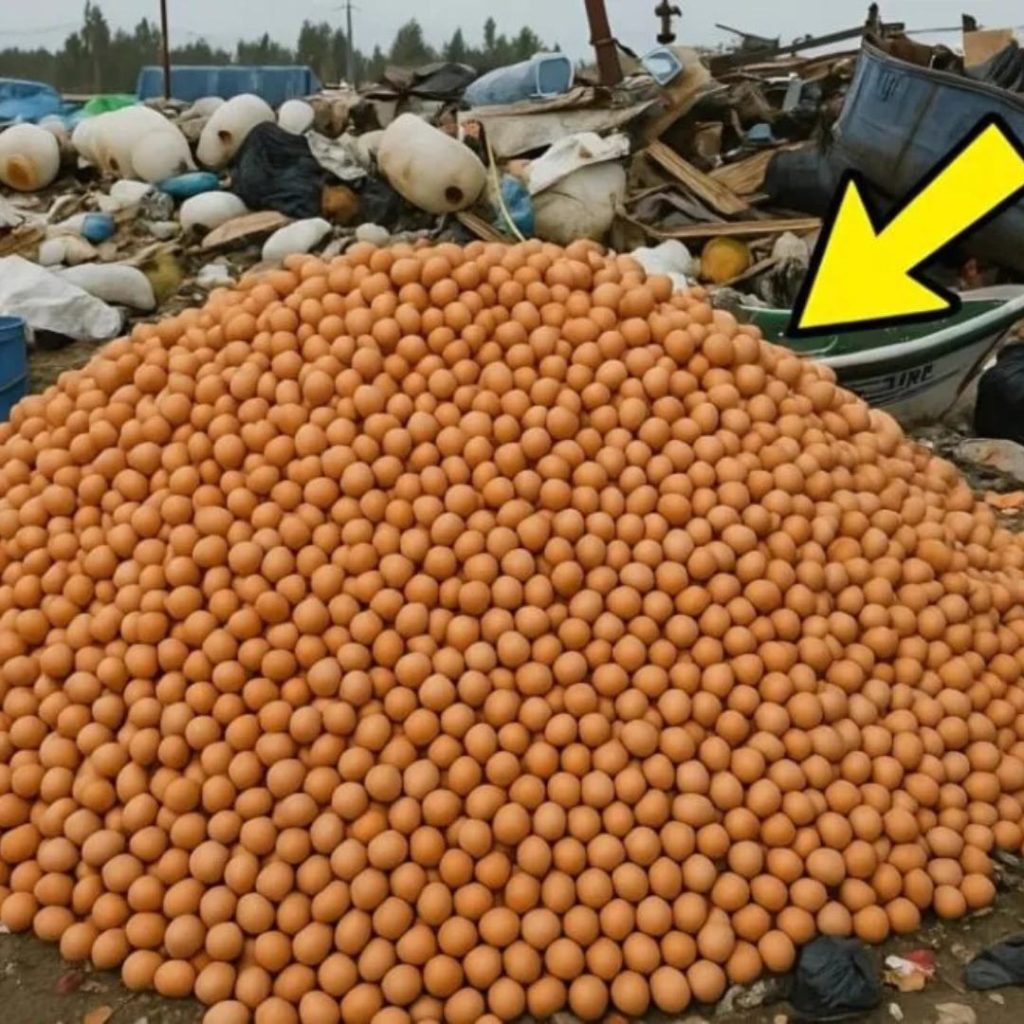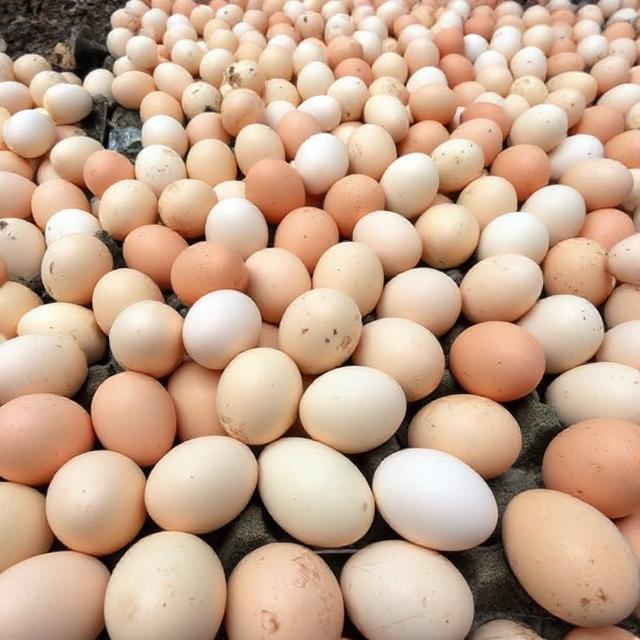Twenty thousand chicken eggs were taken off store shelves and discarded at the city landfill, but three months later, something surprising occurred.

As spring gently unfolded, its soft sunlight filtering through tender leaves and the air carrying the scent of new growth, the city moved in its usual rhythm. Street vendors opened stalls, shoppers browsed for fresh produce, and children, their backpacks bouncing, made their way home from school. Everything seemed ordinary on the surface. But beneath this normalcy, something quietly remarkable had begun to take shape.
It started with a standard public health inspection. Officials, during their rounds, uncovered a troubling oversight — a local distributor had been storing a vast quantity of eggs in substandard conditions. Roughly 20,000 eggs were deemed unfit for consumption. Some were cracked or visibly dirty, others were beyond expiration or had been poorly stored, rendering them unsafe for sale.
The response was swift. The eggs were collected, marked for disposal, and packed into cartons. Then came the trucks — large, rumbling vehicles hauling load after load to the city’s landfill. The site, surrounded by rusted fences and buzzing with machinery, was a grim landscape of forgotten objects: splintered furniture, broken electronics, and the stench of decaying waste. The eggs were dumped without ceremony, blending into the layers of trash.
In the days that followed, rain softened the cartons, and some eggs broke open, oozing into the mess. Others were pecked at by birds or simply sank beneath the surface, vanishing into the sludge. The city moved on. The disposal was complete, the danger removed. People resumed their daily routines, giving little thought to the vanished eggs.

For More Stories
But then, three months later, something extraordinary occurred.
It was just after dawn when Boris, the landfill’s longtime caretaker, arrived for his morning shift. With a worn thermos in one hand and the other tucked into his coat against the chill, he walked the familiar gravel paths, expecting the usual sights — gulls screeching overhead, rats scurrying through piles, the mechanical drone of compactors.
Yet that morning, something was different.
The birds, usually eager to dive into the organic waste, hovered nervously in the air. The landfill was quieter than usual. Intrigued, Boris made his way toward the trash mound. The air was thick with the familiar sour stench of rot, but something unexpected caught his eye.
Movement.
Tiny, golden shapes darted through the debris — chicks. Dozens, maybe hundreds of them, alive and peeping softly in the morning stillness. Their delicate forms emerged from broken shells and damp cartons, their fluffy bodies bright against the grey wasteland.
Some chicks hid beneath broken furniture, others nestled in collapsed boxes. A few still had eggshells clinging to their heads, freshly hatched. Somehow, impossibly, the eggs had incubated and brought forth life — right there in the heart of the city’s garbage dump.
The conditions were far from ideal. The landfill was cold at night, soaked by spring rains, and littered with predators. There had been no hens, no incubators — just the warm decay of rotting matter and time. And yet, life had taken hold.
Word spread quickly. By midmorning, the landfill’s fence was lined with curious onlookers — residents, reporters, scientists. Children pressed their faces to the chain-link, wide-eyed. Experts took samples, checked temperatures, and scratched their heads. Theories surfaced — perhaps the decomposition generated enough heat to mimic incubation. Maybe the eggs, buried deep in the warm core of the waste, found the perfect pocket of conditions. But none of it fully added up.
Locals began referring to them as the “miracle chicks.” People brought shoeboxes and gently carried them home. One elderly woman said she took a chick because it reminded her that hope can be born in the most unlikely places. A group of schoolchildren adopted a few as a class project, promising to raise them with care.
The city launched an official inquiry, but no definitive explanation was ever offered. Still, the public didn’t seem to need one. What they had witnessed was enough — a glimpse of resilience, of life thriving against all odds.
Over the following weeks, many of the chicks were taken in by shelters or adopted into new homes. Their yellow fluff gave way to feathers, their tiny peeps became chirps. They grew, and so did the legend.
Where once the landfill had symbolized waste and decay, it now carried a new meaning for the people of the city. It became a place of transformation — where something discarded gave rise to something alive.
In time, the story entered local folklore. Residents spoke of the “Hatch at the Heap” as a testament to nature’s stubborn will. Teachers shared the tale in classrooms, parents recounted it at bedtime. It became a quiet metaphor — that even in places we consider ruined, life may be waiting to rise.
And though science never fully accounted for the event, the emotional truth remained clear: sometimes, miracles don’t bloom in pristine gardens but in forgotten corners, buried in what we choose to throw away.
Welcome back to our website! We’re thrilled to have you here again. Since your last visit, we’ve made
exciting updates and additions. Discover new content, features, and products tailored to your interests.
Our team has worked tirelessly to enhance your user experience. Take a fresh look around and explore the
changes. We’re committed to continuously improving and providing value to our valued visitors like you.
Thank you for your continued support. We look forward to serving you again and making your visit an
enriching experience.



